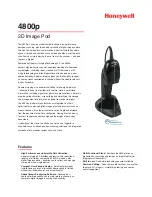
33
5
Load the document with the sealed end of the carrier
sheet as the leading edge.
After placing the document, align the document guides with both
edges of the document.
CAUTION
If the document is not placed properly inside the carrier sheet,
you may get a document jam or not get a scan image as
intended.
IMPORTANT
• Insert documents straight into the center of the carrier sheet.
Proper scanning will not be possible if the document is too
close to either side, tilted, or protruding from the carrier sheet.
• The maximum thickness that can be scanned is 127g/m
2
. If the
thickness exceeds 127g/m
2
, the scanner may break down due
to problems such as paper jam.
• When scanning passports, use the optional carrier sheet for
passports.
• Carrier sheet is a consumable item. Replace it with a new one
when necessary, if there is visible damage or smudging.
• As a rough guide, replace the carrier sheet after 1,000 scanning
operations with a single 80g/m
2
(22 lb bond) sheet inserted.
Setting the Long Document Mode
The length of documents that can be scanned with the scanner is
normally 356 mm (14.02"), but you can scan documents up to 5,588
mm (220") long by setting the scanner to the Long Document mode
(200dpi gray scale).
IMPORTANT
By selecting the Long Document mode and setting the [Page Size]
on the scanner driver settings screen to Auto-detection, documents
of up to 5,588 mm (220") in length can be scanned. Note the following
when using the Long Document mode:
• When scanning in the Long Document mode, if the document is
placed on the scanner in a skewed position, it may hit the edges of
the feeding area and be damaged. Be careful to place the
document so that it is not skewed.
• When scanning with the Long Document mode, paper jam
detection may react slowly, resulting in damage to the document.
Be careful to avoid paper jams.
• When scanning large-sized documents with the Long Document
mode, scanning may be slower. Errors also occur due to memory
shortage, and scanning may be disabled.
Yes
No
No
No
















































